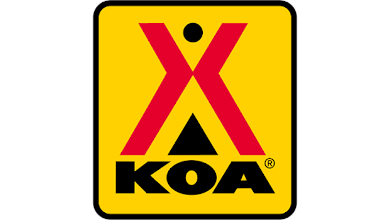KOA Annual Report: Camping Interest Remains High

This week, KOA released its annual North American Camping Report.
Compared to 2019, the proportion of first-time campers across the U.S. grew five-fold, while the number of households that own RVs grew by 2.6 million, according to the latest research from Kampgrounds of America’s annual North American Camping Report. COVID-19 proved a key driver behind the influx of many camping attributes, including the 10.1 million households who camped for the first-time in 2020, of which one-third attributed trying camping due to the belief that it is a safe way to travel and desire to avoid crowds. More than 60 percent of these first-time campers plan to camp the same or more in the coming year; across all campers, families are the group most likely to spend more nights camping in 2021.
Camping had been steadily growing in popularity prior to the pandemic, but experienced aggressive growth across the U.S. last year. The 2021 North American Camping Report, which surveyed U.S. and Canadian campers’ sentiments and behaviors on the outdoor recreation in January 2021, shows that more than 86 million U.S. households consider themselves campers and 48 million of those households took at least one camping trip in 2020 – up more than 6 million over 2019.
Campers are also more diverse than ever as the incidence of camping among non-white and same-sex communities meets or exceeds national representation. Six-in-10 first-time campers in 2020 represent diverse ethnic groups, while 61 percent of same-sex households camp with children, an increase of 12 percentage points over 2019.
“More than 80 percent of campers changed their camping habits last year – including working and schooling from the campground, turning to RVs for travel safety and security, and adding more weekdays to their trips – which, coupled with the influx of first-time campers, solidifies that many Americans turned to camping and the outdoors to make it through a challenging year,” said Toby O’Rourke, president and CEO of Kampgrounds of America. “One of the most encouraging trends of this year’s data is the continued growth of diverse communities engaging in camping for the first time and becoming even more engaged, like Black campers having the highest intent of all camper sub-groups to purchase an RV this year.”
In addition to the spikes of first timers and the diversity of campers, 2020 saw an increase in activity around RVing as people turned to RVs to provide a safe, personal space while on-the-road and camping.
Data indicates a strong outlook for both RV and the camping industries, with more people identifying as RV campers, more people buying RVs and a very strong increase in interest year-over-year.
Additional key findings of the 2021 North American Camping Report include:
How COVID-19 Changed the Camping Experience
- More than 80 percent of campers changed their camping habits in 2020 with one of the most encouraging changes being an increase in the number of weekday trips.
- Forty-one percent of all campers, and 51 percent of new campers, say they sometimes or always work while camping. Millennial campers are the most likely to work while camping (54 percent), up 11 percentage points since 2019.
- Families are the most likely to say that being able to work or school remotely allowed them to camp more often.
- Up slightly from 2019, more than half of all campers say that access to cell or Wi-Fi service impacts the amount they are able to camp. On average across all campers, access to technology generates six additional camper nights, a rate that has doubled since 2018.
Attributes of 2020’s First-Time Campers
- Twenty-one percent of the 48 million households who camped at least once in 2020 classified themselves as first-time campers. This equates to 10.1 million households in 2020 and is a significant increase compared to 4 percent of new campers in 2019.
- These first-time campers are under the age of 40, parents, and ethnically diverse. More than half stayed at campgrounds with at least some amenities and services, but also purchased some type of camping gear for their first trip. Nearly half tried glamping, and 28 percent identified as RV campers.
- First-time campers said that having access to technology allowed them to camp an additional nine days in 2020.
Of the first-time campers who indicated having a “great” first experience in 2020, nearly three-fourths are likely to continue camping. The factors that contributed to campers having an enjoyable experience, and could contribute to other first-timers having a positive camping trip in 2021, include:
- Having an existing love of the outdoors and always wanted to try camping.
- A pleasant, low-maintenance experience at a campground that included many services and amenities (such as bathrooms and showers, on-site activities, a campground store, Wi-Fi and more).
- Sharing the experience with friends or as part of a bigger group.
The Impact of COVID-19 on RVing
- In 2020, the number of U.S. households who camp in an RV is 13 million, which reflects a 1.6 million increase of households over 2019. The number of households who own an RV is approximately 9.6 million, which reflects an increase of 2.6 million households over 2019.
- From a generational perspective, RV ownership increased the most among Gen-Xers and millennials; ownership growth can also be seen in families.
- Among all RV owners, about one-fourth said they plan to upgrade their RV in the coming year; half of new RV owners plan to upgrade in 2021, showcasing that these new RV owners are continuing to find their groove as they gain more experience.
- Up substantially from 2019, about one-third of non-RV owners indicate that they would like to purchase an RV in the coming year.
- Nearly half of first-time campers who don’t currently use an RV to camp say they plan to purchase an RV in the next 12 months.
The 2021 Camping Outlook
- As the world continues to deal with the COVID-19 into 2021, campers intend to continue camping. Campers intend to increase their trips in the coming year.
- Across all campers, families (couples with children) are the group most likely to continue camping in 2021 as they noted plans to spend more nights camping (70 percent) and taking more camping trips (64 percent).
- Sixty-two percent of all first-time campers in 2020 plan to camp the same or more camping nights in the coming year.
- Almost half of campers say that the COVID vaccine will allow them to camp more often in 2021. The vaccine is most likely to increase camping among millennial and Gen-X campers.
- There is high interest among all campers to try a new experience in 2021, half want to try RVing or glamping.
To view additional findings of the 2021 North American Camping Report, visit the KOA Press Room. To view past versions of the annual North American Camping Report visit KOA.com/north-american-camping-report/.

